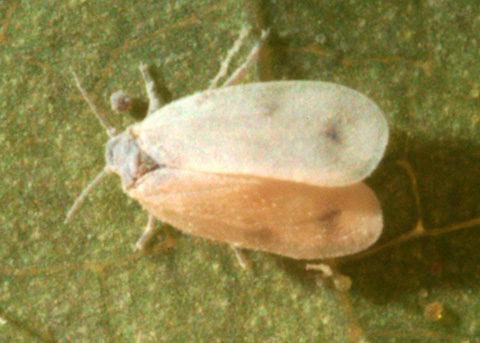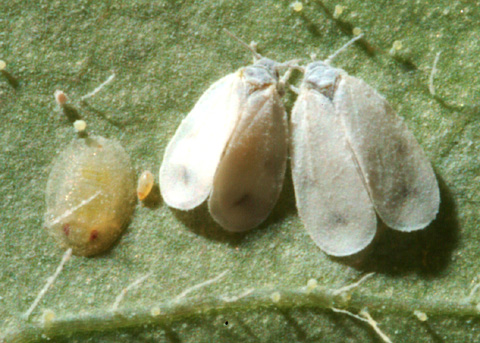|
|
Iris Whitefly Aleyrodes spiroeoides Hemiptera: Aleyrodidae Laguna Beach, Orange County, CA. 11/25/06. On underside of rose leaves. © Peter J. Bryant.
|
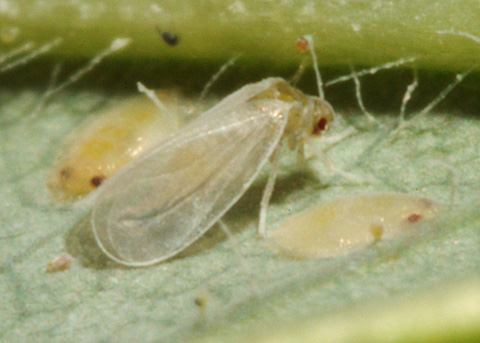 Newly emerged adult, without wax on wings, and two pupae. |
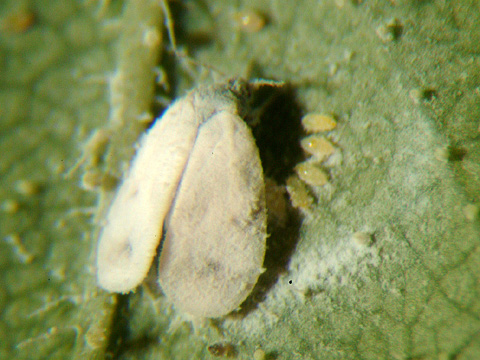 Adult with waxy wings, and eggs laid on waxy deposit. |
|
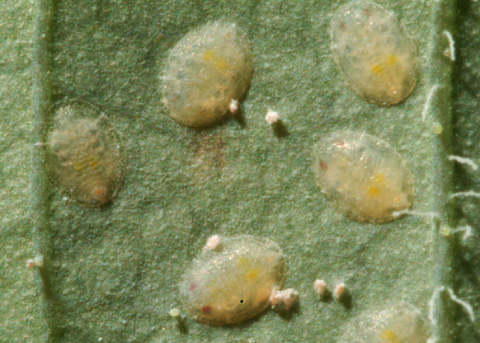 Nymphs and pupae (with red eyes). |
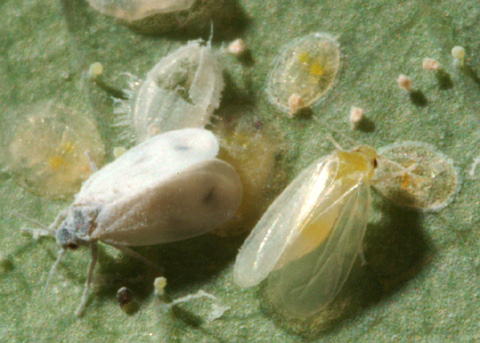 Mature and newly emered adults, nymphs, and pupal cuticle from a different species (Trialeurodes). |
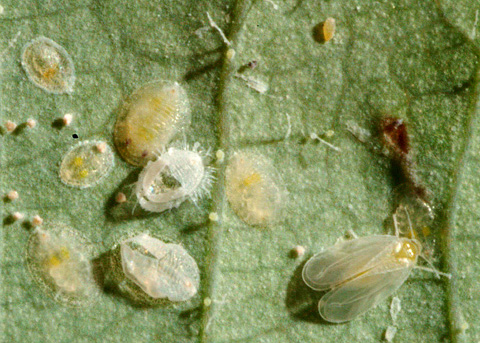 Egg, nymphs, pupa (red eyes), pupal cuticle, pupal cuticle from a different species (Trialeurodes), and newly emered adult. |
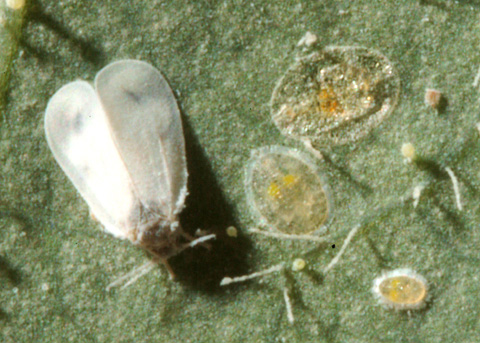 Nymphs and adult. |
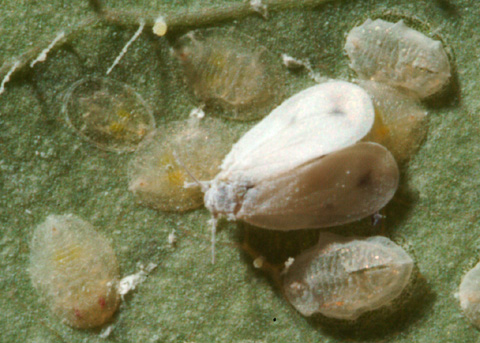 Nymphs, pupa (red eyes), pupal cuticles, and adult. |
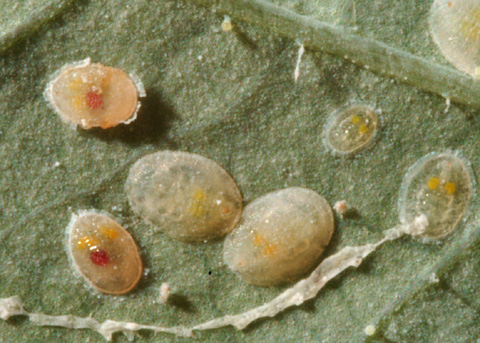 Nymphs. Some (with red inclusions) parasitized? |
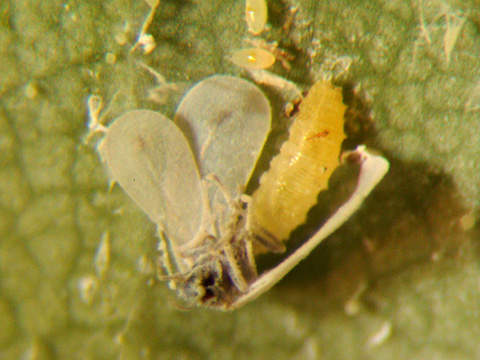 Eggs, and adult being eaten by an unidentified larva. |
Named for the fine white powder that covers the wings and body, adult Whiteflies are white, small (<3mm long), moth-like insects, usually seen in colonies on ornamental plants including rose, oak, iris, and morning glory. Both nymphs and adults feed on the plant they infest, but the nymphs do more damage by withdrawing sap, usually from the lower surface of leaves. In some species the last-stage nymphs secrete white wax plumes, ribbons, or filaments, forming fringes around their bodies that protect them from parasitoids and predators. Whiteflies important in the Los Angeles Basin include the Iris Whitefly (Aleyrodes spiroeoides) on roses, the Crown Whitefly (Aleuroplatus coronata) on oak trees; the Mulberry Whitefly (Tetraleurodes mori) on plants of the genera Ceanothus and Rhamnus; the Greenhouse Whitefly (Trialeurodes vaporariorum) on citrus; the Wooly Whitefly (Aleurothrixus floccosus) on citrus; and the Ash Whitefly (Siphoninus phillyreae) on citrus, ash, pear, apricot, and apple trees. The Ash Whitefly was introduced from the Mediterranean area in about 1988 and forms large swarms that appear as fine ash clouds in the wind. In the absence of natural enemies, it thrives in the Los Angeles Basin. Parasitoids and other predators have been introduced to try to limit the infestation. Text by Britton Schram. |
|
